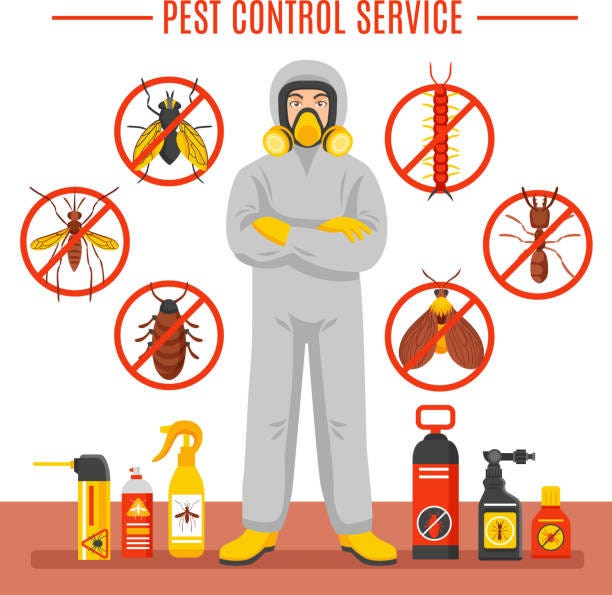Bed Insect Therapy Failure: Comparing Chemical Vs. Non-Chemical Solutions
In the realm of bug control, specifically when managing the consistent issue of bed bugs, the option in between chemical and non-chemical treatment options can be a critical one. Both approaches supply unique benefits and drawbacks, influencing factors such as efficiency, safety and security factors to consider, and overall price. By checking out the nuanced information of each technique, a clearer understanding of which course to seek in addressing a bed pest problem can be acquired.
Efficiency of Chemical Therapies
Chemical therapies for bed bug invasions have been widely identified for their powerful and fast efficiency in getting rid of these parasites. When considering the effectiveness of chemical treatments, it is critical to recognize that they can offer a quick and complete option to a bed pest problem. Professional pest control operators often rely on insecticides to target bed insects at different phases of their life cycle, consisting of fairies, eggs, and adults. These chemicals usually function by interrupting the bed bugs' nervous system, resulting in paralysis and ultimate fatality.
Moreover, chemical therapies have the benefit of offering recurring effects, suggesting that they can continue to get rid of bed insects also after the initial application. This residual activity is particularly helpful in combating any kind of possible re-infestations. Additionally, the quick action of chemical treatments can bring alleviation to individuals dealing with extreme bed pest invasions, enabling them to restore control of their space quickly.
Security Worries With Chemical Solutions
One essential facet that calls for cautious consideration when making use of chemical solutions for bed insect therapy is ensuring the safety and security of residents and the environment. Direct exposure to certain chemicals utilized in bed bug therapies can lead to respiratory system problems, skin irritation, or other unfavorable reactions, especially in people with pre-existing problems or sensitivities.
Furthermore, the environmental impact of chemical remedies is an additional considerable factor to consider. Some chemicals made use of in bed pest treatments may be dangerous to useful insects, wildlife, and ecological communities if they seep right into the dirt or water systems. It is vital to utilize chemical treatments carefully, adhering to safety and security standards, and considering less hazardous options to reduce these dangers and ensure the risk-free and efficient administration of bed pest invasions.
Advantages of Non-Chemical Approaches
Taking into consideration the prospective safety and security concerns and ecological impact associated with chemical remedies for bed insect therapy, exploring non-chemical methods home pest control treatment presents an appealing option with a number of distinct advantages. Non-chemical therapies are eco pleasant, as they do not add to air or water contamination, making them a sustainable option for parasite control.
Additionally, non-chemical services can be efficient in targeting bed pests, including hard-to-reach locations where chemical treatments might not permeate. Techniques such as warm therapy, vacuuming, steam cleaning, and mattress encasements offer comprehensive elimination without making use of damaging chemicals. Additionally, non-chemical approaches can be less disruptive, calling for marginal preparation and permitting quicker reentry into treated areas. Generally, choosing non-chemical bed insect therapy approaches not only prioritizes safety and security and ecological protection however likewise guarantees reliable and extensive pest control.
Limitations of Non-Chemical Treatments

Furthermore, non-chemical treatments typically need numerous applications to accomplish effective elimination. This can be lengthy and might not always assure full removal of all bed insects and their eggs, particularly in hidden or hard-to-reach areas.
In addition, the success of non-chemical therapies heavily depends on appropriate application and thoroughness, which can be challenging for individuals without specialist know-how. Insufficient application of non-chemical approaches might result in insufficient obliteration, resulting in relentless invasions and the need for added therapies.
As a result, while non-chemical treatments have their benefits, it is necessary to acknowledge these constraints and find out this here consider them when figuring out one of the most reliable technique for managing bed pest infestations.
Cost Comparison: Chemical Vs. Non-Chemical Options
Provided the limitations associated with non-chemical treatments, a necessary aspect to evaluate in the context of bed pest administration is the cost comparison between chemical and non-chemical choices. In contrast, non-chemical therapies like warm treatment or vapor can be a lot more costly, with prices ranging from $1,000 to $6,000 for an entire home. While the first expense of chemical treatments might appear reduced, multiple therapies might be called for to totally remove the problem, possibly enhancing the general cost.
Final Thought

Taking into consideration the prospective security problems and environmental influence linked with chemical remedies for bed pest treatment, discovering non-chemical strategies offers a promising option with numerous unique advantages.Provided the constraints associated with non-chemical therapies, a vital element to review in the context of bed bug administration is the expense contrast between chemical and non-chemical options. In contrast, non-chemical therapies like warm treatment or vapor can be more pricey, with prices ranging from $1,000 to $6,000 for an entire home. While the first price of chemical therapies may appear reduced, numerous treatments might be required to fully eliminate the invasion, possibly raising the general cost.In verdict, when contrasting chemical and non-chemical bed insect therapy options, it is essential to think about efficiency, safety, benefits, restrictions, and cost.
Comments on “Expert A1 Charlotte Bed Bug Exterminator - High Quality Service Guaranteed”